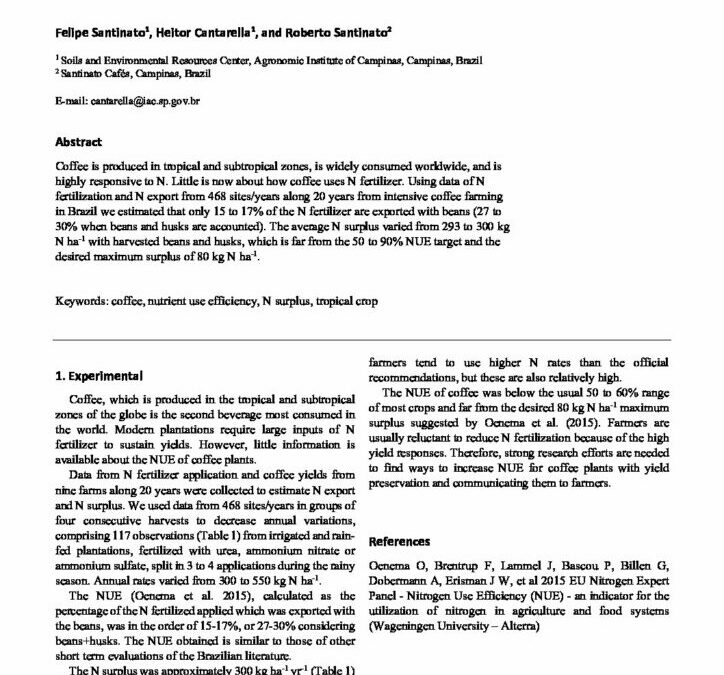Coffee plants have low NUE

Coffee is produced in tropical and subtropical zones, is widely consumed worldwide, and is highly responsive to N. Little is now about how coffee uses N fertilizer. Using data of N fertilization and N export from 468 sites/years along 20 years from intensive coffee farming in Brazil we estimated that only 15 to 17% of the N fertilizer are exported with beans (27 to 30% when beans and husks are accounted). The average N surplus varied from 293 to 300 kg N ha-1 with harvested beans and husks, which is far from the 50 to 90% NUE target and the desired maximum surplus of 80 kg N ha-1.
Coffee, which is produced in the tropical and subtropical zones of the globe is the second beverage most consumed in the world. Modern plantations require large inputs of N fertilizer to sustain yields. However, little information is available about the NUE of coffee plants. Data from N fertilizer application and coffee yields from nine farms along 20 years were collected to estimate N export and N surplus. We used data from 468 sites/years in groups of four consecutive harvests to decrease annual variations, comprising 117 observations (Table 1) from irrigated and rainfed plantations, fertilized with urea, ammonium nitrate or ammonium sulfate, split in 3 to 4 applications during the rainy season. Annual rates varied from 300 to 550 kg N ha-1. The NUE (Oenema et al. 2015), calculated as the percentage of the N fertilized applied which was exported with the beans, was in the order of 15-17%, or 27-30% considering beans+husks. The NUE obtained is similar to those of other short term evaluations of the Brazilian literature. The N surplus was approximately 300 kg ha-1 yr-1 (Table 1) indicating that N is being lost or wasted. In the areas surveyed, farmers tend to use higher N rates than the official recommendations, but these are also relatively high. The NUE of coffee was below the usual 50 to 60% range of most crops and far from the desired 80 kg N ha-1 maximum surplus suggested by Oenema et al. (2015). Farmers are usually reluctant to reduce N fertilization because of the high yield responses. Therefore, strong research efforts are needed to find ways to increase NUE for coffee plants with yield preservation and communicating them to farmers.
